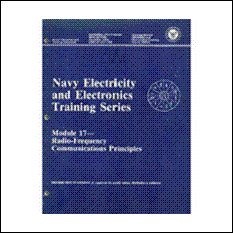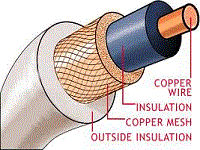Antenna Vertical Polarization
Advantages of antenna vertical polarization can be used to provide OMNIDIRECTIONAL (all directions) communication. This is an advantage when communications must take place from a moving vehicle.
In some overland communications, such as in vehicular installations, antenna heights are limited to 3 meters (10 feet) or less. In such instances antenna vertical polarization results in a stronger receiver signal than does horizontal polarization at frequencies up to about 50 megahertz. From approximately 50 to 100 megahertz, antenna vertical polarization results in a slightly stronger signal than does horizontal polarization with antennas at the same height. Above 100 megahertz, the difference in signal strength is negligible.
For transmission over bodies of water, vertical polarization is much better than horizontal polarization for antennas at the lower heights. As the frequency increases, the minimum antenna height decreases. At 30 megahertz, vertical polarization is better for antenna heights below about 91 meters (300 feet); at 85 megahertz, antenna heights below 15 meters (50 feet); and still lower heights at the high frequencies. Therefore, at ordinary antenna mast heights of 12 meters (40 feet), vertical polarization is advantageous for frequencies less than about 100 megahertz.
Radiation is somewhat less affected by reflections from aircraft flying over the transmission path when vertical polarization is used instead of horizontal polarization. With horizontal polarization, such reflections cause variations in received signal strength. This factor is important in locations where aircraft traffic is heavy.
When vertical polarization is used, less interference is produced or picked up because of strong vhf and uhf broadcast transmissions (television and fm). This is because vhf and uhf transmissions use horizontal polarization. This factor is important when an antenna must be located in an urban area having several television and fm broadcast stations.
Advantages of Horizontal Polarization
A simple horizontal antenna is bi-directional. This characteristic is useful when you desire to minimize interference from certain directions. Horizontal antennas are less likely to pick up man-made interference, which ordinarily is vertically polarized.
When antennas are located near dense forests or among buildings, horizontally polarized waves suffer lower losses than vertically polarized waves, especially above 100 megahertz. Small changes in antenna locations do not cause large variations in the field intensity of horizontally polarized waves. When vertical polarization is used, a change of only a few meters in the antenna location may have a considerable effect on the received signal strength. This is the result of interference patterns that produce standing waves in space when spurious reflections from trees or buildings occur.
When simple antennas are used, the transmission line, which is usually vertical, is less affected by a horizontally mounted antenna. When the antenna is mounted at right angles to the transmission line and horizontal polarization is used, the line is kept out of the direct field of the antenna. As a result, the radiation pattern and electrical characteristics of the antenna are practically unaffected by the presence of the vertical transmission line.

















